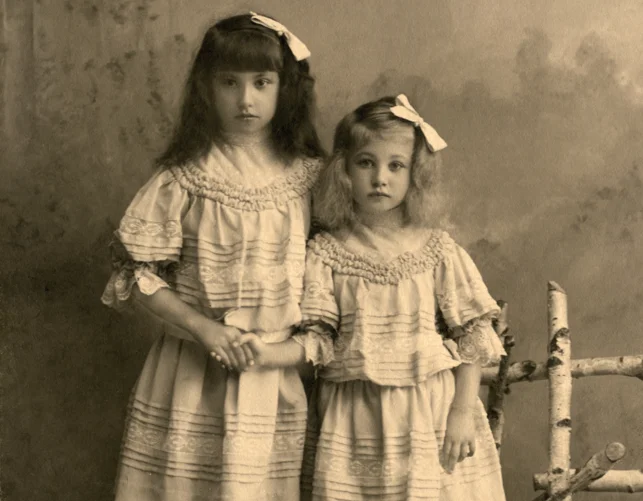Parenting in the ’60s and ’70s operated under a completely different set of social expectations and family dynamics. Practices that were once considered standard would now trigger widespread concern or potential legal intervention. These house rules reflected a time of significant social transformation, where family hierarchies and child-rearing approaches were dramatically different from today’s standards.
1. Children Should Be Seen and Not Heard

Dinner tables were sacred spaces of strict hierarchical communication where children were expected to sit in near-complete silence. Parents considered any unsolicited child commentary a serious breach of social etiquette and family protocol. The unwritten rule was clear: adults spoke, and children listened with rapt attention and minimal interaction. Phrase Finder writes that the origins of this sentiment date back hundreds upon hundreds of years, to boot.
Mealtimes became lessons in restraint and social conditioning for young family members. Children learned early that their opinions were secondary to adult conversations and social interactions. This communication model was viewed as a fundamental way of teaching respect and understanding one’s place in the family structure.
2. Corporal Punishment Was Considered Proper Discipline

Spanking was not just accepted but enthusiastically endorsed as a legitimate and necessary form of child-rearing across most households and social circles. Parents viewed physical discipline as a critical tool for teaching respect, managing behavior, and building character in young people. Wooden spoons, belts, and open hands were considered standard disciplinary instruments that were wielded with minimal hesitation. Walden University has traced the use, opposition against, and disappearance of corporal punishment in the United States, particularly in the classroom.
Entire communities supported this approach to child management, with relatives, neighbors, and even teachers potentially participating in physical correction. The psychological impacts of such disciplinary methods were rarely discussed or considered significant at the time. Children were expected to accept punishment stoically, understanding that physical correction was a normal part of growing up.
3. Kids Roamed Neighborhoods Unsupervised All Day

Parents would dispatch children outside after breakfast with nothing more than simple instructions to return by dinnertime, having no concern about their precise whereabouts during entire days. Entire neighborhoods functioned as communal playgrounds, with children moving freely between yards, streets, and local parks without constant adult supervision. Safety was understood through community awareness and informal neighborhood networks rather than direct parental monitoring. Miracle Recreation writes that not only is outdoor playtime good, but it actually matters for a child’s development.
Children developed incredible independence and street smarts through these unsupervised adventures, learning social navigation and problem-solving skills organically. Afternoon explorations might include everything from impromptu baseball games to exploring local creeks and vacant lots. Parents viewed this freedom as a normal part of childhood development, trusting both their children and their community.
4. Smoking Was Permitted Everywhere, Including Around Children

Adults would smoke freely in homes, cars, and public spaces with complete disregard for children’s respiratory health and potential long-term consequences. Ashtrays were standard decorative items in living rooms, often placed prominently as social accessories rather than health hazards. Children were frequently tasked with fetching cigarettes or matches for adults, treating these potentially dangerous items as routine household objects.
Entire family gatherings would be conducted in smoke-filled rooms without a second thought about air quality or potential health risks. Cigarette marketing targeted every demographic, presenting smoking as a sophisticated and desirable activity for all ages. The connection between tobacco use and serious health problems was not yet widely understood or acknowledged by the general public.
5. Children Were Responsible for Significant Household Chores

Kids were expected to contribute substantially to household maintenance from remarkably young ages, with complex chores being standard expectations across most families. Children as young as seven might be responsible for preparing simple meals, doing laundry, or caring for younger siblings without adult supervision. These responsibilities were viewed as critical character-building experiences that prepared children for future adult responsibilities.
Families saw household contributions as a fundamental part of childhood education and family participation. Boys and girls were assigned different but equally demanding sets of household tasks that were considered normal training for future roles. The concept of childhood as a time of complete leisure was foreign to most families of this era.
6. Seat Belts Were Optional and Car Safety Was Minimal

Children would freely move around vehicle interiors, often sitting in parents’ laps or lying across back seats during long drives without any consideration of potential danger. Car seats were rudimentary or completely non-existent, with safety regulations being dramatically different from modern standards. Parents viewed their driving skills and careful attention as sufficient protection for their children.
The entire concept of child automotive safety was radically different, with most families seeing restraints as unnecessary inconveniences. Children were often allowed to stand between seats, sit in the front passenger area, or move about the car during travel. The dramatic reduction in child traffic fatalities was decades away from becoming a significant public health priority.
7. Dietary Rules Were Dramatically Different

Children were expected to clean their entire plate regardless of hunger or personal preference, with food waste considered a moral failure and sign of disrespect. Parents would often force children to sit at the table until every morsel was consumed, using guilt or punishment as motivation for complete consumption. Picky eating was viewed as a character flaw to be corrected through strict enforcement.
Nutritional understanding was limited, and parents believed forced consumption was a fundamental aspect of good parenting and child health. Meals were not negotiated but dictated, with children having minimal input into their dietary choices. The connection between forced eating and potential eating disorders was not yet understood or discussed.
8. Physical and Mental Health Were Handled Differently

Mental health challenges were rarely discussed, with children expected to suppress emotions and “toughen up” during difficult times without complaint. Emotional vulnerability was seen as a significant weakness that needed immediate correction or suppression. Families viewed psychological struggles as personal failings rather than legitimate health concerns.
Medical treatments often involved home remedies or waiting until situations became critically urgent before seeking professional help. Children were expected to endure physical discomfort and emotional challenges with minimal external support or understanding. The entire approach to childhood health was characterized by a “walk it off” mentality that minimized individual suffering.
9. Privacy Was Virtually Non-Existent

Family members, especially children, had minimal expectations of personal privacy within the household environment. Bedrooms could be searched without warning, personal items could be examined, and conversations could be overheard or interrupted at any time. The concept of personal boundaries was dramatically different from modern interpretations of individual space and autonomy.
Parents viewed complete access to their children’s personal spaces and communications as a fundamental right of guardianship. Locked doors, private phone conversations, and personal journals were often seen as suspicious behaviors that required immediate investigation. Children were expected to maintain total transparency with parental figures without question.
10. Harsh Social Conformity Was Expected

Families maintained strict expectations about appearance, behavior, and social interactions that allowed little room for individual expression or deviation. Boys and girls were subjected to rigid gender expectations about clothing, activities, future aspirations, and acceptable social behaviors. Deviation from these established norms could result in significant social and familial consequences.
Cultural conformity was viewed as a virtue, with unique individual expressions often discouraged or actively suppressed. Families saw their role as molding children into predictable, socially acceptable versions of themselves rather than encouraging individual creativity. Personal identity was understood through strict cultural and familial lenses that left minimal room for personal exploration.
11. Spare the Rod, Spoil the Emotional Intelligence

Religious and cultural teachings consistently reinforced the idea that children required strict emotional management through authoritarian parenting techniques. Many families interpreted biblical passages as literal instructions for child-rearing, believing that emotional vulnerability was a weakness to be systematically eliminated. Parents saw their primary role as creating disciplined, unquestioning children who would respect authority without hesitation.
Emotional expression was carefully controlled, with boys especially discouraged from showing any signs of sensitivity or vulnerability. Crying was viewed as a fundamental character flaw that needed immediate correction, often through shaming or additional punishment. Children learned to suppress their feelings as a survival mechanism, creating generational patterns of emotional repression that would take decades to unravel.
12. Educational Expectations Were Dramatically Different

Parents often viewed education as optional, especially for girls or children from working-class backgrounds with limited economic mobility. Academic achievement was not universally prioritized, and many children were expected to enter workforce training or manual labor directly after basic schooling. College was seen as a privilege for a select few rather than a standard expectation for most families.
The connection between education and future economic success was not yet fully understood or emphasized across all social classes. Many families saw practical skills and immediate economic contribution as more valuable than extended academic pursuits. Children’s educational paths were often predetermined by family economic status and traditional gender expectations.
These house rules represent a nuanced snapshot of a rapidly changing social landscape, reflecting both the limitations and cultural norms of their time. While many of these practices seem shocking today, they were simply the standard operating procedure for millions of families across the nation. Understanding these historical approaches helps us appreciate how much societal attitudes have evolved in just a few decades.


